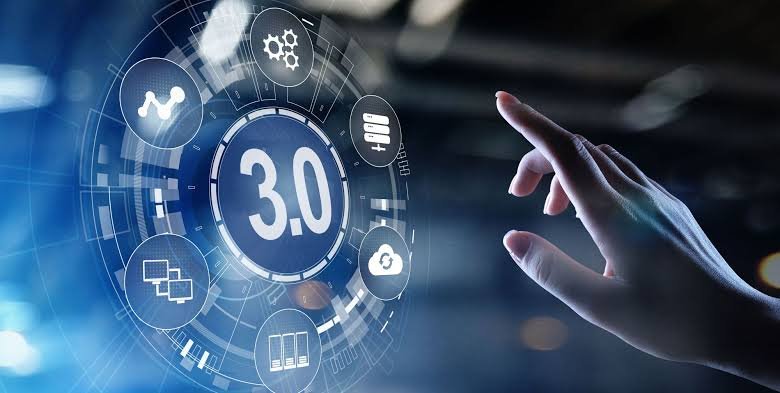The internet is a significant technological advancement that has been around for years.
You wouldn’t have had access to this article if the internet hadn’t been invented, which serves as a good example of how inventive the internet is. Web1 and Web2 have given way to Web3 in the evolution of the internet. W
eb3.0 is now the hot thing in the crypto industry despite the fact that it is still in its infancy. Web3, the new form of internet, has a variety of capabilities that can be added to improve upon earlier internet technologies. It brings significant improvement to technology with its decentralized features and openness.
Also, many people are vying to incorporate their product, project, skills and other attributes into Web3. But, due to the fact that Web3 is still a relatively new invention, most people are still perplexed and curious about Web3 and its underlying principles.
In this article, you will learn more about web3.0, its uses, and its operation.
What is Web3
Web 3.0 is the latest Internet technology that interconnects data in a decentralized way employing the blockchain security mechanism. Web 3.0 is also known as the “Internet of Value,” and it is a vision for the internet’s future.
The objective of this new technology is data ownership, transparency, and freedom, and it accomplishes this goal with the aid of artificial intelligence (AI), machine learning, and blockchain technology.
Web Evolution From 1.0 T0 3.0
The World Wide Web’s evolution is divided into distinct categories, each of which went through different phases, time frames, technologies, and user behaviors.
Web1.0 is the first and earliest generation of the internet, which existed from the late 1990s to the early 2000s. This stage is classified as a static web page. T
he Web page’s contents are fixed, and users can only read information online without being able to interact, update, or share it. In this era of the internet, only the website developer manually updates the web content on the server, and users access this content through their browsers. HTML, CSS, and JavaScript are examples of Web 1.0 technologies that were used to build and format web pages.
Web 2.0 is the current version of the World Wide Web that everyone uses or is aware of. This phase introduced the ability for users to interact with and share content online via social media, blogs, and other web applications. During this period, social media and other web-based applications became popular, allowing users to create, connect, and share content with other users. W
eb 2.0 technologies include social media sites such as Facebook, Tik Tok, Twitter, Instagram, and YouTube, as well as blogging platforms such as WordPress, Medium and Blogger.
Web 3.0 is the next iteration of the web evolution, and has the potential to make a significant impact on the web in the same way that Web 2.0 did. This stage of web development is still in its early stages, but it is expected to build on the foundations of Web 1.0 and Web 2.0 by adding even more cutting-edge technology and capabilities. Web 3.0 is based on the fundamental ideas of decentralization, openness, and increased user utility.
This stage is expected to be marked by the broad application of AI (artificial intelligence), machine learning, and other advanced technologies to provide users with a more transparent, intelligent, and personalized web experience.
Natural language processing, semantic web technologies, and IoT(Internet of Things) are some examples of Web 3.0 technologies that are currently being developed.
Features of Web3.0
1. Decentralization: Peer-to-peer (P2P) interactions are made possible by Web3 technologies, which rely on decentralized networks like blockchain networks for data transmission and storage. As a result, there is no central authority in charge of overseeing the network, and users can interact with one another directly and without the need for middlemen.
2. Security: To guarantee the confidentiality and integrity of data, transactions, and operations on the decentralized web, Web3 technologies employ cryptographic techniques. Comparatively speaking, this can offer a higher level of security compared to traditional web technologies, which are open to hacker attacks and data leaks.
3. Data ownership: You don’t own your data when you use websites like Facebook or YouTube since these businesses have the ability to collect, own, and recoup your data. However, because Web3 has incorporated a decentralized system, you now control your data because it is kept in your web3 cryptocurrency wallet. You can connect to web3 apps and communities through your wallet, and you can log out and take your data with you. Because you are the one who owns the data, you also have the choice of whether to monetize it.
4. Pseudonymity: Just like data ownership, privacy is a feature of your wallet. On web3, your wallet acts as your identification, making it challenging to link it to your real identity. So, even if someone were to watch a wallet’s behavior, they wouldn’t be able to tell which wallet it was.
5. Immutability: Immutable records can be created using Web3 technology, which means that once data is stored on a decentralized network, it cannot be changed, updated or removed. In contrast to traditional databases, which can be effortlessly corrupted or modified, this can offer a more dependable and credible record-keeping system.
6. Censorship Resistance: Because Web3 technologies do not rely on centralized servers or entities that can be banned or shut down, they are resistant to censorship. In situations when traditional web access is limited or banned, people can still access and engage with the decentralized web.
7. Interoperability: Web3 technologies make it possible for various decentralized networks and protocols to interact with one another, resulting in the development of a more open and connected decentralized web.
Some of the key technologies and concepts that underpin Web 3.0 include:
- The semantic web, which is an idea for the future of the web whereby data is displayed in a way that makes it understandable and processable by computers, increasing its usability and accessibility for people.
- Natural language processing (NLP), enables more fluent and intuitive interactions between humans and technology by enabling computers to comprehend and process human language.
- Blockchain and distributed ledger technologies have the power to disrupt entire sectors and introduce new business models since they allow for safe, decentralized data storage and exchange.
- Machine learning algorithms, which assist computers to learn from data and enhance their output and performance over time, thereby creating a pathway for more intelligent and personalized web-based experiences.
- The Internet of Things (IoT), which refers to the network of interconnected devices that can exchange data and communicate with one another as well as with other web-based systems.
- Virtual and augmented reality technologies (VR/AR), which are facilitating more immersive and interactive internet experiences.
Potentials of Web3.0
Web 3.0 has the potential to bring about a huge paradigm change and be just as disruptive as Web 2.0.
Users can have far more control over their personal data thanks to key features of Web 3.0 including decentralization and Censorship Resistance.
Web3.0 Limitations
Accessibility
Important Web3 functionalities, such as Sign-in with any blockchain network are available for anyone and cost nothing.
But, many people still find the relative cost of transactions to be burdensome. Due to high transaction costs, Web3 is unlikely to be used in developing countries with lower levels of wealth, thereby limiting entry into Web3. The
technology is prepared, but to make Web3 widely accessible, layer 2 adoptions must improve.
User experience
Web3 currently has a too-high technical entry hurdle. Users need to be able to navigate complex user interfaces, comprehend security issues, and comprehend sophisticated technical data.
This is being addressed by wallet providers in particular, but further development is required before Web3 is effectively deployed.
Education
In contrast to Web 2.0, Web3 presents new concepts that call for acquiring new thoughts and ideas. Web3 is not challenging, but it is unique.
Its success depends on educational programs that will inform Web2 users of these Web3 principles.
Conclusion
The development of the Internet is set to enter a new era. Web 3.0 should therefore be important to us since it has the potential to significantly improve how we utilize the internet and how we access its resources.
With the use of Web 3.0’s Decentralized blockchain protocol, users will be able to access the internet where they can own their time and data and be fairly reimbursed for it, replacing the exploitative and unfair web that is only owned and profitable by large tech giants and other centralized servers.
Discover more from DiutoCoinNews
Subscribe to get the latest posts sent to your email.












